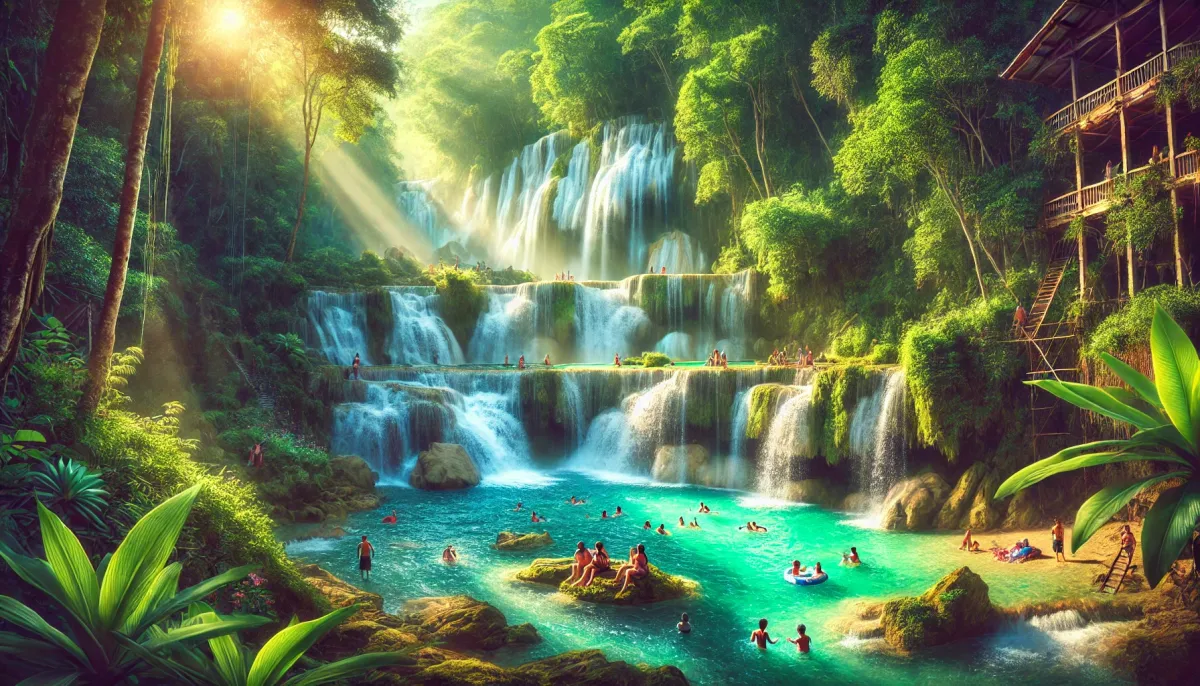Hey fellow travelers! Mark here, your friendly neighborhood American backpacker, back with another incredible Asian adventure! This time, I journeyed to Luang Prabang, Laos, a place that completely stole my heart. Forget the hustle and bustle of city life; this UNESCO World Heritage site offers a unique blend of ancient charm and natural beauty. Prepare to be mesmerized!
Riding Elephants Ethically in Luang Prabang
One of the highlights of my trip was visiting an elephant village near Luang Prabang. I've been to elephant sanctuaries in Thailand, and I have to say, the experience here felt different. It wasn't just about riding the elephants for a quick photo op. Instead, it was about interaction and respect. The focus was on a more ethical approach, allowing me to bathe the elephants, play in the water with them, and learn more about their care. It felt less exploitative than some of the more commercially driven elephant riding experiences I've encountered elsewhere in Southeast Asia. The elephants appeared well-cared for, and the overall vibe was much more relaxed and natural.
Luang Prabang: A Living UNESCO World Heritage Site
Luang Prabang's history stretches back to the 8th century. By the 14th century, it became the capital of the Lan Xang Kingdom, the first unified kingdom of Laos. Though the capital later moved to Vientiane, Luang Prabang retained its significance, showcasing a rich blend of Lao and French colonial architecture. In 1995, UNESCO recognized its unique cultural and historical value, designating it a World Heritage site. Walking through its streets, you can feel the history beneath your feet, a true testament to its enduring legacy. The town's architecture, with its red, black, and white color scheme, is striking. It’s a beautiful, charming, and peaceful place to spend some time.
| Historical Timeline of Luang Prabang |
|---|
| 8th Century: Earliest known settlement |
| 14th Century: Becomes capital of the Lan Xang Kingdom |
| 19th-20th Century: French Colonial Period |
| 1995: Designated a UNESCO World Heritage Site |
Kuang Si Falls: A Natural Wonder
My adventure continued at Kuang Si Falls, about 20-30 kilometers from Luang Prabang. This wasn't just any waterfall; it's a cascading series of turquoise pools, perfect for a refreshing swim. I spent hours there, simply marveling at the beauty and enjoying the cool water. It's a paradise for water lovers, and I noticed many other tourists, especially Westerners, happily swimming and enjoying themselves without the stringent safety regulations I'm used to seeing back home. The lack of excessive safety signage reflected a more relaxed, trusting approach to outdoor activities. This reminded me of my childhood, playing freely in natural settings without constant warnings.
This stark contrast with the more heavily regulated environments of my home country made me reflect on different cultural attitudes towards risk and responsibility.
Exploring the Kuang Si Falls Bear Sanctuary and Beyond
The Kuang Si Falls complex also houses a bear sanctuary, another great place to visit. The bears were well-cared-for, and I enjoyed observing them in their natural habitat. The contrast between this peaceful, "static zone" and the waterfall’s more active areas was refreshing.
Later, I explored other areas within Luang Prabang. I experienced traditional alms-giving ceremonies, witnessed the serenity of rural life, and was impressed by the untouched beauty of the surrounding countryside.
Laos: Untapped Potential and Economic Growth
Laos, despite its smaller size compared to its neighbors, is experiencing significant economic growth (around 7% annually), fueled by resource extraction, hydropower exports, and a strategic focus on attracting foreign investment. However, logistical challenges, such as limited infrastructure, remain. The country's natural resources are vast, with significant potential for growth, but challenges remain in transportation and infrastructure. The country is actively working on improving its infrastructure to better support the needs of its growing economy. I found it fascinating to learn about the country's economic strategy and its efforts to improve its infrastructure.
Tam Chang Cave: A Journey into the Earth
My exploration of Laos extended to the Tham Chang Cave in Vang Vieng. This area is known for its stunning karst landscape, reminiscent of Guilin, China. The cave itself is impressive, with spectacular formations. The surroundings are incredibly beautiful, showcasing the rural charm of Laos. The entrance fee was distinct for locals and tourists – a unique cultural observation.
Vang Vieng: Rural Charm and Unparalleled Beauty
Vang Vieng is another must-visit destination in Laos. It's a place where you can escape the urban frenzy and appreciate the simple pleasures of life, surrounded by majestic limestone karsts, lush rice paddies, and tranquil rivers.







